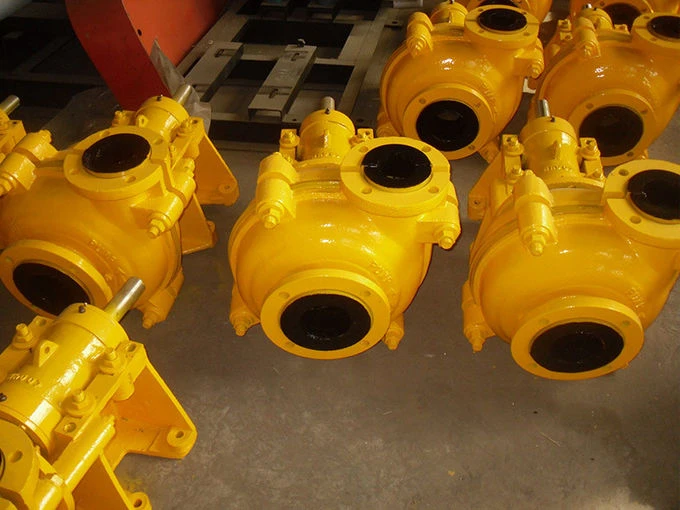Jan . 01, 2025 15:14 Back to list
Dredge Pump Performance Features and Technical Specifications Overview for Optimal Efficiency
Understanding Dredge Pump Specifications
Dredge pumps are essential components in various industries, particularly in dredging operations, mining, and construction. These specialized pumps are designed to handle the difficult task of moving water mixed with sediments, slurries, or other heavy materials. Understanding the specifications of dredge pumps is crucial for optimizing their performance, efficiency, and reliability in challenging environments.
Types of Dredge Pumps
Dredge pumps come in several types, each designed with specific applications in mind. The primary types include centrifugal pumps, positive displacement pumps, and submersible pumps.
- Centrifugal Pumps This type utilizes rotational energy to impart velocity to the fluid, creating a flow through the pump. Centrifugal pumps are commonly used for moving large volumes of water and slurry and are favored for their efficiency and relative ease of maintenance.
- Positive Displacement Pumps These pumps function by trapping a fixed amount of fluid and forcing it through the discharge. They are useful in applications requiring high pressure and can handle more viscous materials compared to centrifugal pumps.
- Submersible Pumps Designed to operate underwater, submersible pumps can effectively manage a significant volume of slurry without the need for priming. They are typically used in configurations where the pump needs to operate in deep water.
Key Specifications to Consider
When evaluating dredge pump specifications, several parameters must be taken into account
1. Flow Rate (Capacity) Measured in gallons per minute (GPM) or cubic meters per hour (m³/h), the flow rate indicates the volume of fluid the pump can move within a certain timeframe. It is critical to select a pump that can handle the flow demands of the application.
dredge pump specifications

2. Total Dynamic Head (TDH) This specification refers to the total height that a pump can raise water, taking into account friction losses within the system. It is an essential factor affecting the pump's performance and efficiency.
3. Suction and Discharge Size The diameter of the suction and discharge pipes affects the flow capacity and efficiency of the dredge pump. Ensuring appropriate sizing is crucial for minimizing turbulence and maximizing performance.
4. Material of Construction Dredge pumps must be durable to withstand abrasive materials commonly encountered in dredging. Materials such as high-chrome iron, stainless steel, or rubber-lined components are often used to enhance the pump's lifespan.
5. Weight and Size Considering the pump's weight and dimensions is crucial, especially for portable dredging operations. Pump weight influences the ease of transport and deployment, while size impacts the space available on the dredging vessel or platform.
6. Drive Mechanism Dredge pumps can be powered by electric motors, diesel engines, or hydraulic systems. The choice of drive mechanism should align with the operational environment and available power sources.
Additional Considerations
In addition to the aforementioned specifications, maintenance requirements and the ability to repair or replace parts should be factored into the decision-making process. Regular maintenance ensures optimal performance, especially in aggressive environments where pumps face constant wear and tear.
Another critical aspect is the pump's efficiency curve, which illustrates how the pump performs at different flow rates and heads. Understanding this curve can help operators determine the best operating point for their applications, leading to energy savings and increased pump lifespan.
Conclusion
Understanding dredge pump specifications is essential for ensuring the success of dredging operations. By considering factors such as flow rate, total dynamic head, material construction, and maintenance, operators can choose the right dredge pump for their specific needs. By making informed decisions, they can enhance productivity and decrease operational costs in their dredging projects.
-
Wholesale Slurry Pump Closed Impeller Supplier High Efficiency China Slurry Pump Closed Impeller
NewsJul.06,2025
-
High Quality Warman Slurry Pump Drawings Supplier & Factory Reliable Customization
NewsJul.06,2025
-
China SP Slurry Pump Supplier – Vertical Sump Pump Rubber Lined Manufacturer & Factory
NewsJul.05,2025
-
High Quality Submersible Slurry Pump with Agitator Manufacturer & Factory Reliable Submersible Pump Solutions
NewsJul.05,2025
-
Cheap Dredge Pump for Sale – China Cheap Submersible Pump for Wastewater Supplier
NewsJul.05,2025
-
Wholesale Casting Dredge Pump Part - High Quality China Manufacturers & Suppliers
NewsJul.04,2025
